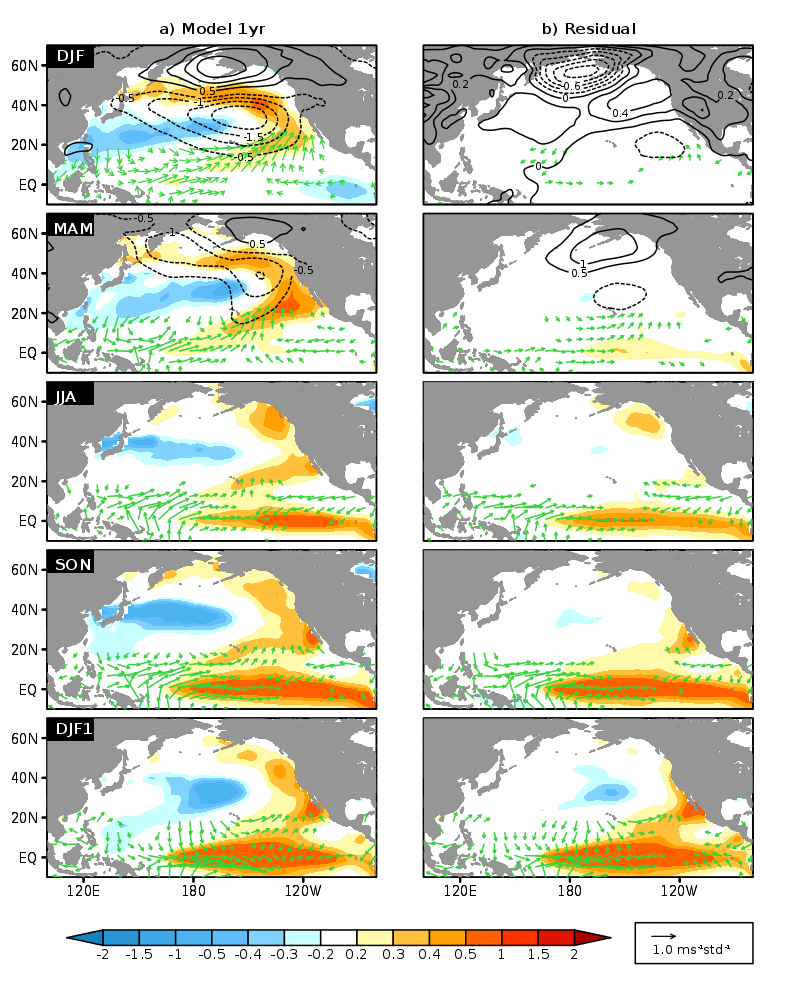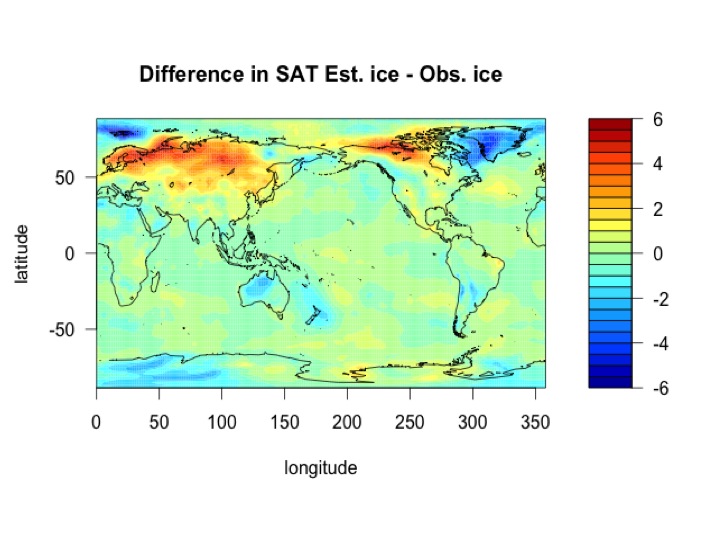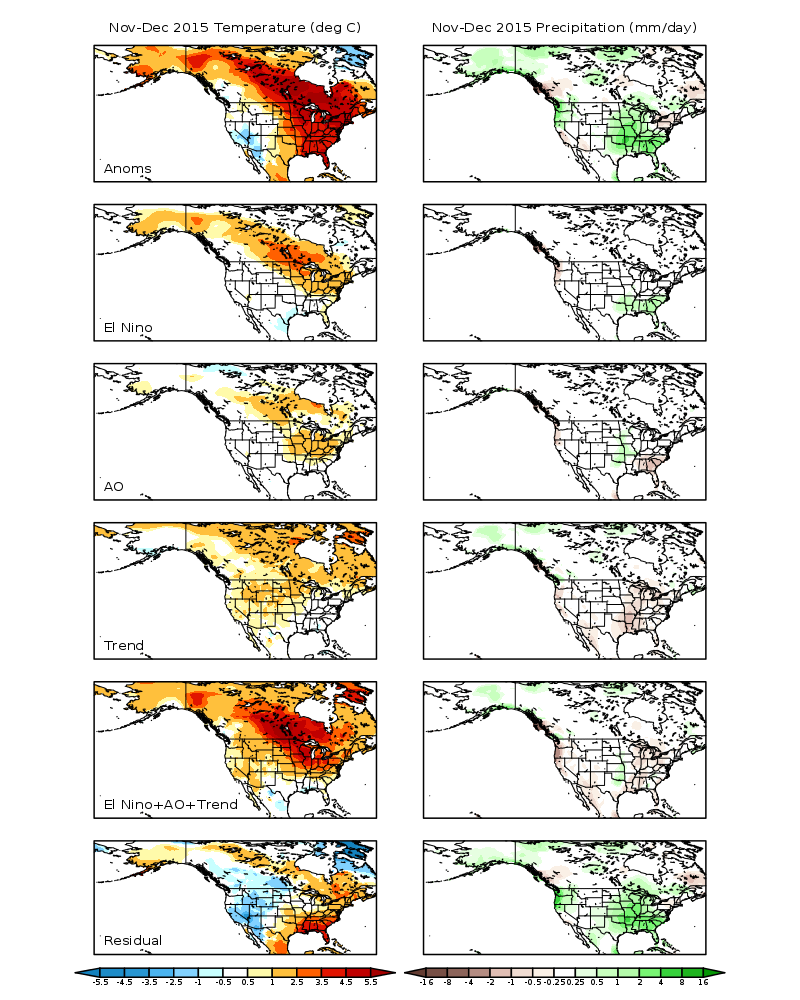Is it possible to predict ENSO events 1 year in advance?
For specific cases, it appears that such predictions may be possible. Some El Niño events are forced from the extratropics. These events evolve over the course of a year, much more slowly that those that are not extra tropically forced. These more slowly evolving events are potentially predictable at 1-year lead times. In the figure, the left panels show the evolution of extratropically forced events and the right column shows the evolution of events that are not extratropically forced.
People: Pegion (GMU), Selman (GMU)
Publications: Pegion, K. and C. Selman 2016: Patterns of Climate Extremes: Trends and Mechanisms, Extratropical Precursors of the El Niño Southern Oscillation. S. -Y. Wang, R. Gillies, J -H Yoon, and C. Funk, Eds., AGU/Wiley-Blackwell, in press
Funding: This research is supported by NASA, NOAA, and NSF through a grant to the Center for Ocean-Land-Atmosphere Studies







